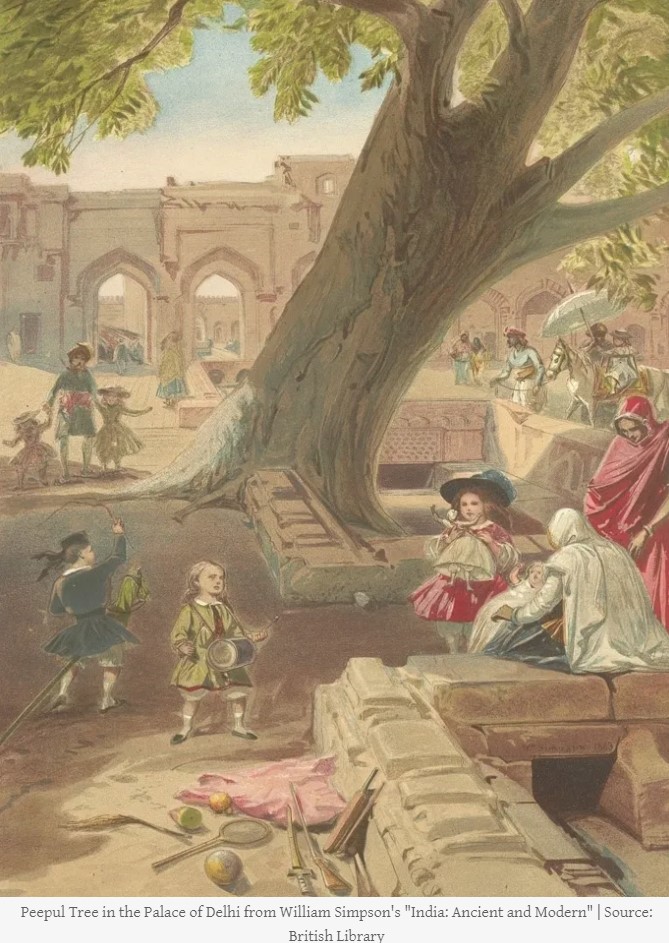The Peepul Tree in Red Fort, Delhi drawn in the after of the 1857 War of Independence is considered the witness to the transformation of the city within a decade. It is evident that a number of foreign photographers and artists were commissioned to record the British account of the 1857 Uprising – most of these images were loaded with “colonial gaze and narrative of Delhi” which were later circulated back home in England through postcards, photographs, and albums, adding to the British legends of 1857 “Mutiny” and later the siege and fall of Delhi.
The photograph of the interior of the Red Fort in Delhi from the “Murray Collection: Views in Delhi, Cawnpore, Allahabad and Benaras” was taken by Dr. John Murray in 1858 after the Uprising of 1857. Murray was one of the first photographers to visually document the city immediately after the 1857 Uprising. The photograph is titled “Tree in Palace, Delhi, under which 49 Christians were murdered on 15th May 1857.”

The second image is a sketch taken from plate 34 of William Simpson’s “India: Ancient and Modern”. In his attempt to exploit commercial opportunities in the region, especially after the 1857 Mutiny, Simpson arrived in Calcutta in 1859 and travelled throughout India for the next four years sketching various locations and natives; he returned to England in 1864. It was only in 1867 that his massive collection was published and exhibited. In the second image, European children are pictured playing around a colossal peepal tree on the grounds of the Red Fort in Delhi, accompanied by their ayahs (Indian nannies) and syces (horse grooms).
The two trees in the images seem to be from the same site several years apart; both speaking of the British narrative of 1857 and its after. It needs to be noted that after the British siege and later recapture of Delhi in 1857, the Fort came under British control. Most of the buildings within the Red Fort were destroyed with the help of explosives. The existing gardens and buildings were demolished and subsequently covered with tall military barracks. Swapna Liddle in “Chandni Chowk: The Mughal City of Old Delhi” further notes the change in the inhabitants of the Red Fort post-1857,
“The Red Fort was further occupied by the British army and lived in by many British officials and their families. Indians could enter only by paying a fee, and were let in to attend the gora bazaars, which were events modelled on the Meena bazaars, or women’s bazaars, of Mughal times.”
The two images provide us glimpses into the physical transition of the city – the two “A Tree in the Delhi Palace” images become a captivating site of two contrasting events in the city; the killing of European women and children and the playing of European children in an interval of few years, writing two different chapters in the history of the city.
Source: Article by Tanuja Bhakuni https://zikredilli.com/f/a-tree-in-the-delhi-palace-1858-and-1867